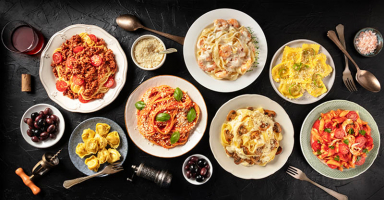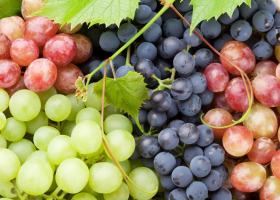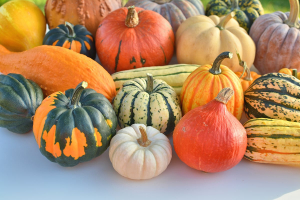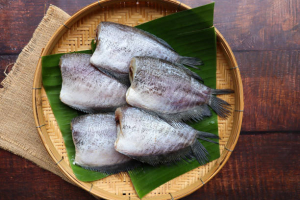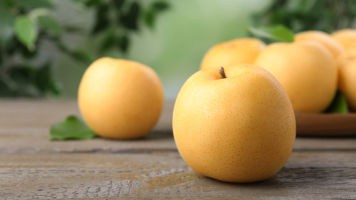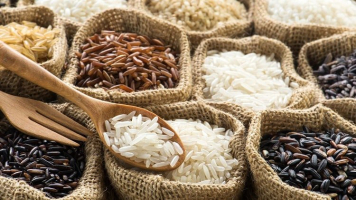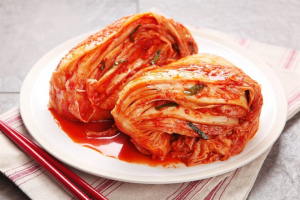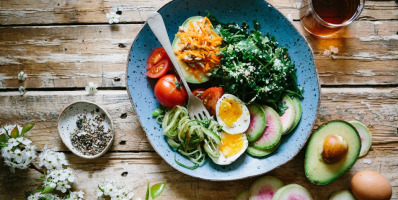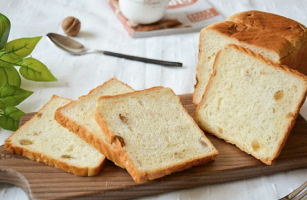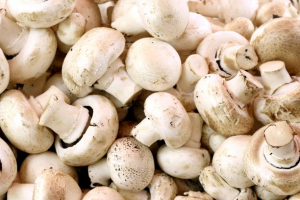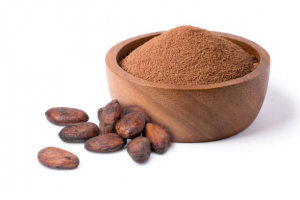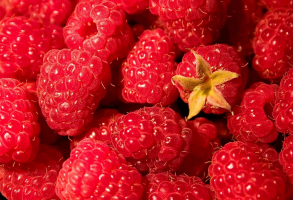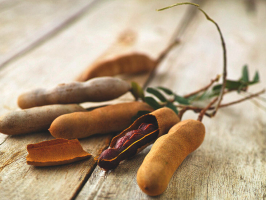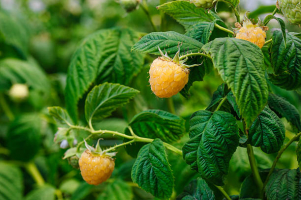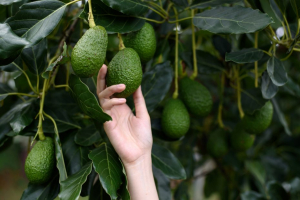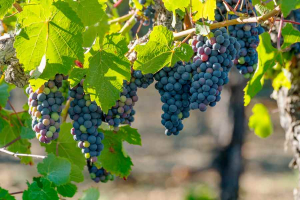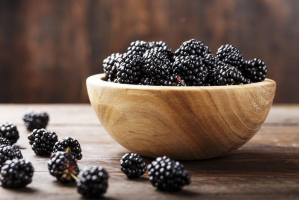Top 18 Most Delicious Types of Pasta
Isn't it incredible how one sort of food can take on so many distinct forms? Pasta is one of the most adaptable pantry staples; simply boil some water and top ... read more...it with a little sauce and perhaps some protein. Some pasta is ideal for transporting thick and meaty sauces, while others are better suited for soups and salads. However, Toplist will introduce you to the best types of pasta in this article.
-
A little modification to an existing pasta can result in the creation of an altogether new variety of pasta. It may appear to be a minor variation, but bucatini is proof that when handled correctly, slight variances between different types of pasta may affect the entire eating experience. Bucatini is derived from the Italian word buco, which means "a hole". Bucatini is similar to spaghetti but has a totally hollowed middle.
This holy core makes all the difference, and Bon Appétit even claims that bucatini is the greatest pasta in the world. According to the website, although spaghetti is only coated with sauce on the surface, the hollowed center ensures that the sauce will fill inside the bucatini noodles, making it a perfect pasta for anybody who loves their noodles particularly saucy. When you slurp your pasta, the small pocket of sauce inside the noodle makes a unique noise, adding to the amusement of the dining experience. Bucatini can be served in any sauce that would normally be served with pasta. Amatriciana sauce produced from guanciale, a kind of Italian meat prepared from hog cheek, is used in a classic bucatini dish.
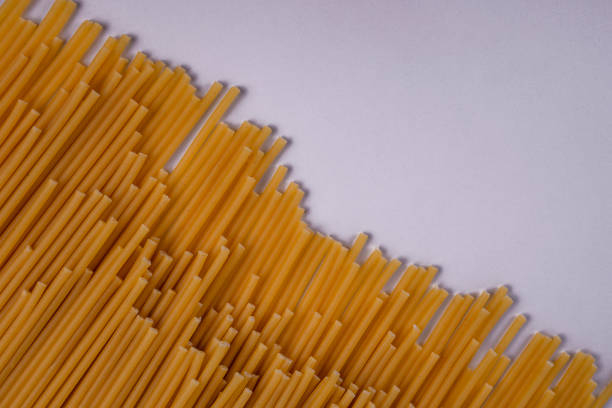
Bucatini 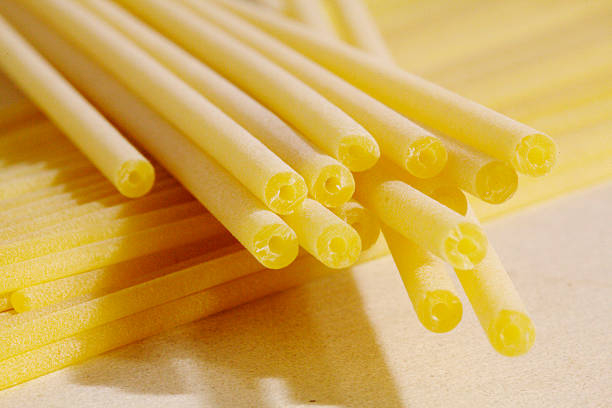
Bucatini -
Cannelloni are hollow tubes of pasta made by rolling thin sheets of lasagne pasta into cylinders and stuffing them with contents within. Some historians claim that cannelloni's origins can be traced back to buckwheat crepes consumed in northern Italy's Valtellina area. These crepes were filled with a mixture of locally made cheeses, cabbage, and béchamel sauce. Others believe that cannelloni was invented in Campania during the first half of the nineteenth century, when a chef named Vincenzo Corrado mentioned a large pacchero (a smaller version of a cannelloni) in his cookbook, which he boiled, stuffed with meat and truffles, covered in a meat-based sauce, and baked.
Although the contents and sauces differ, cannelloni is still best cooked in a similar manner. In Campania, cannelloni is filled with a mixture of mozzarella, ricotta, and ham, but Roman versions ask for a meat-based filling as well as a meat ragù to drizzle over the pasta. A white cannelloni with béchamel and Parmesan is favored in the Umbria area of Italy. In certain regions of Italy, cannelloni is served as the first dish with a stuffing of spinach and ricotta with béchamel replacing tomato sauce and Parmesan.
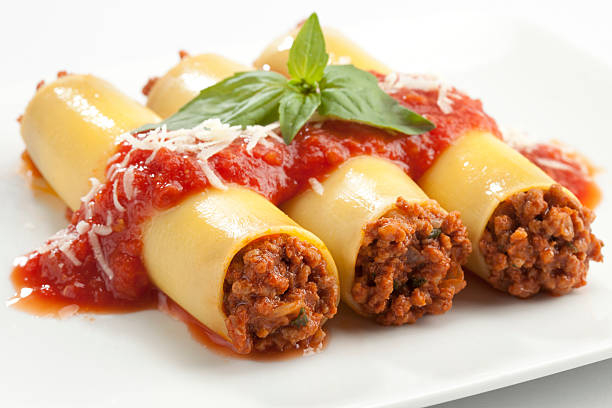
Cannelloni 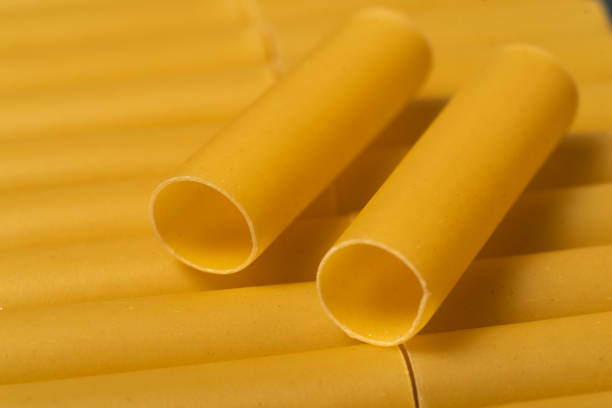
Cannelloni -
Capellini, often known as angel hair pasta, is identical to spaghetti but roughly one-third the size. Capellini means "hair", which may suggest how delicate and thin the pasta is. Made from a combination of flour, eggs, and water, the tiny pasta is sometimes marketed coiled in nests, takes little cooking time, and is best tossed in light sauces.
A few years ago, capellini was at the center of a major controversy due to its tendency to overcook and become mushy and flavorless. Regardless of your stance on capellini, the pasta is regarded to be very easy to digest without much chewing and is offered in a broth to newborns and new moms alike in Italy. Capellini may be one of the lightest varieties of pasta to consume when coupled with fresh ingredients and light dressings. Capellini can be flavored with light sauces of tomato, herbs, garlic, oil, or butter and cheese. The noodles can also be used in salads or stir-fries with thin pieces of meat.
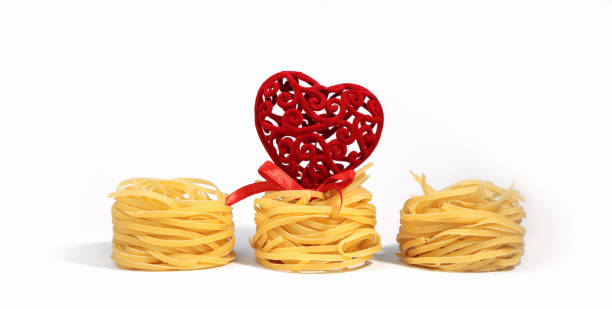
Capellini 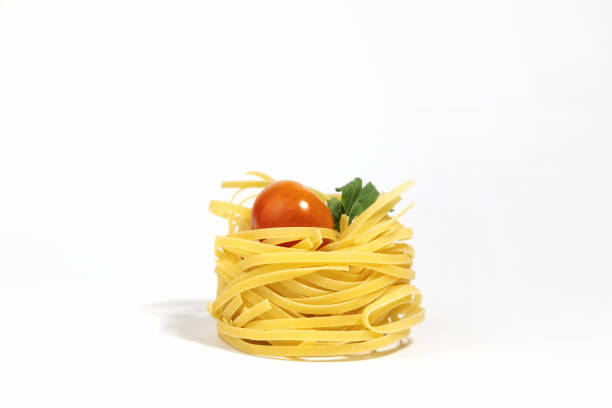
Capellini -
This form, which sounds like a delectable treat, is actually a filled, savory pasta. It gets its name from its resemblance to a wrapped caramel. The caramelle is prepared by filling a tube of pasta dough with a soft filling, such as ricotta, then twisting the ends like a candy wrapper, according to Geometry of Pasta. The delicate egg dough works well with a basic cheese filling or something very soft, like pea puree.
According to Grub Street, caramelle is creating a name for itself in the culinary world and can be seen on menus around the country. Because of the creamy cheese filling, this pasta can only be prepared by hand, and the fresher the better. To taste this unusual form, seek eateries with competent Italian cooks creating these by hand or try it yourself. To create these, start with a smaller cannelloni and twist the ends together. With a little practice, you might make a tasty meal.
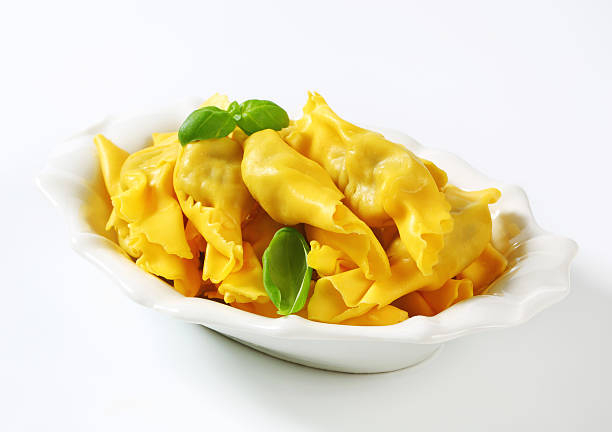
Caramelle 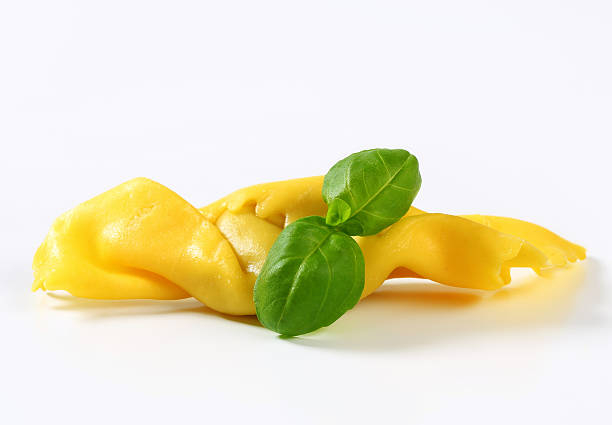
Caramelle -
Casarecce (which translates to "homemade" in Italian) is a pasta form distinguished by a two-inch long tube with a groove through the center. This form is produced by hand by rolling little sheets of pasta dough into tubes. Casarecce is great for retaining some of the runnier sauces and is perfect for recipes with bits of meat or vegetables. Because the spongy spaghetti tube is readily punctured with a fork, you won't be chasing a cherry tomato or sautéed zucchini around the bowl.
Despite the fact that the word casarecce implies a handcrafted construction, this form may be produced by machine using an extruder. Many firms provide commercially accessible choices in the United States, so you don't need to learn how to make pasta to enjoy it. Casarecce comes from Sicily, according to Taste Atlas, so try it with some classic Sicilian dishes, such as prawns or swordfish in a powerful tomato sauce.
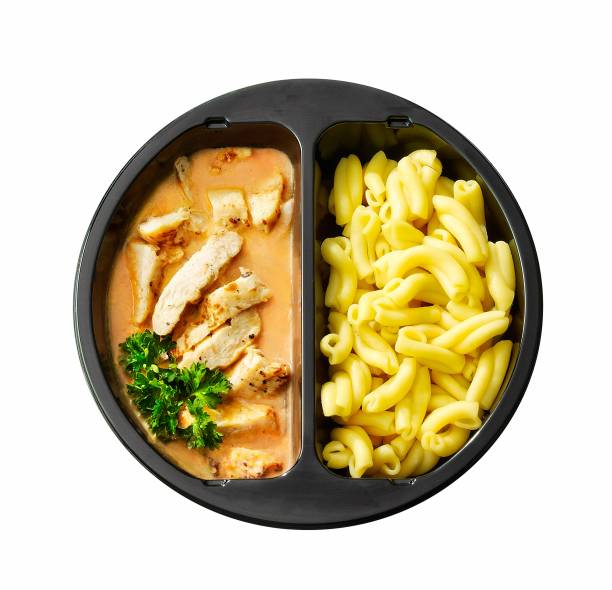
Casarecce 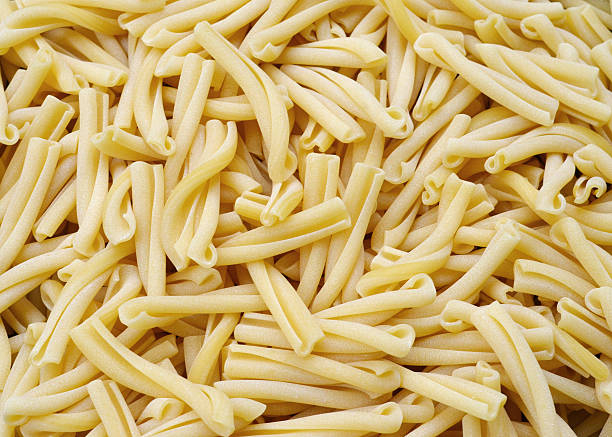
Casarecce -
There are various spiral-shaped pasta alternatives available, and cavatappi is one that works well in all recipes. Cavatappi is the lengthier relative of elbow macaroni. It's created in the same way, with a die and an extruding machine, but more pasta is allowed to pass through before being cut.
Cavatappi has all of the same fantastic attributes as macaroni, but with a more unusual flavor. This makes it ideal for higher versions of mac and cheese, such as this one with chicken apple sausage, and sage. It works just as well with rich cheese sauces that can fill the hollow tube as it does with fresh pasta salad. Simple is usually best, as seen by Noodles & Company's super-popular pesto and chicken cavatappi. Cavatappi's greater size makes it simpler to stab with a fork than macaroni, making it ideal for eating on the go.
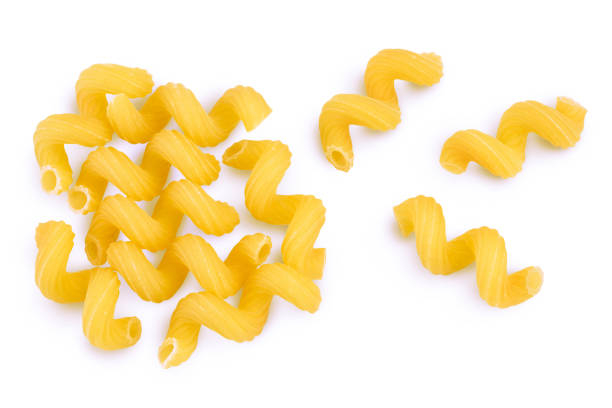
Cavatappi 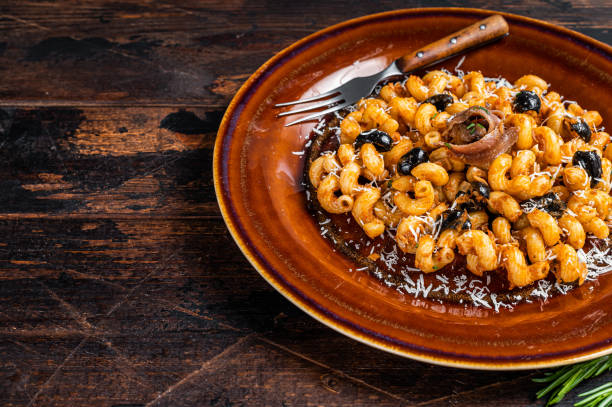
Cavatappi -
Colonne pompeii may sound like an architectural phrase rather than a pasta form, but that is exactly what this noodle is called. It was termed colonne pompeii due to its likeness to Pompeii's columns. This form is comparable to fusilli or rotini and is manufactured in the same manner, but is simply chopped longer. The fork-twirling pleasure of linguine or tagliatelle is combined with the satisfying mouthfeel of fusilli in colonne pompeii.
Colonne pompeii recently went viral on Instagram and has since been more readily available in retailers throughout America. However, if you want some, you'll most likely have to seek them down from a specialty artisan pasta maker. It goes well with any sauce that would go well with strand pasta or short curly pasta. Tomato sauces, thick, cheesy sauces, or a mix of the two (such as vodka sauce) go nicely with colonne pompeii.
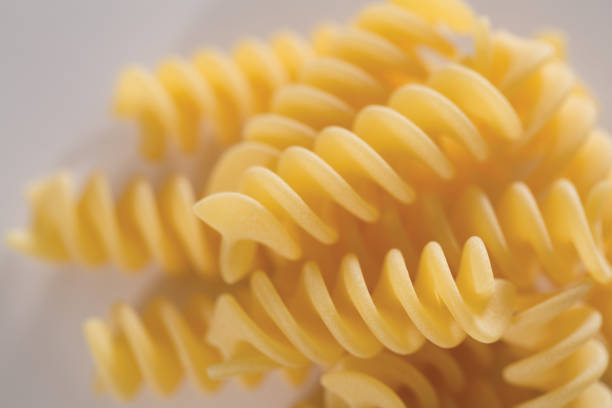
Colonne pompeii 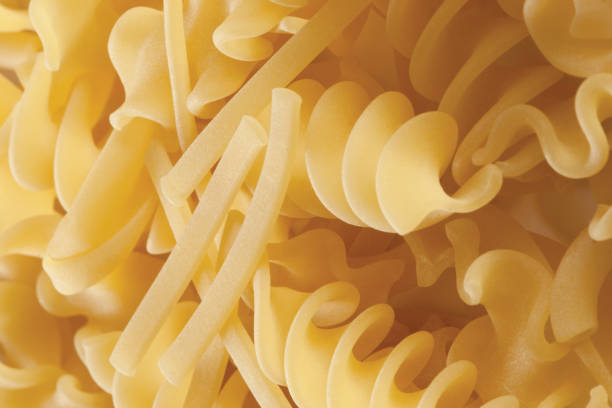
Colonne pompeii -
Conchiglie is also known as shell pasta because to its distinctive sea shell-like form. Conchiglie is often produced with hard durum wheat, which permits the pasta to retain its form even after boiling and baking. Conchiglie's shell-like design means it has a small cavity on one side that may hold chunky meats and veggies. When turned, the pasta has a ridged surface that can accommodate a variety of thin, thick, and chunky sauces.
Conchigliette, a smaller kind of conchiglie, can be added to soups or used in place of elbow pasta in mac and cheese. Conchiglioni is huge giant shells that may be fantastic carriers for holding contents within and baking. Conchiglie may also be relished in a fast olive oil and herb dressing, especially if you use red and green conchiglie with sun-dried tomato or spinach flavor.
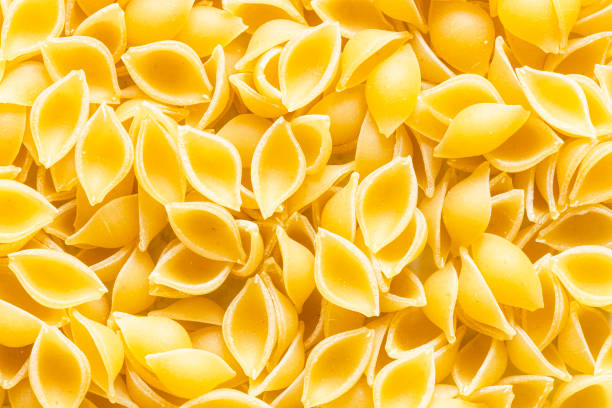
Conchiglie 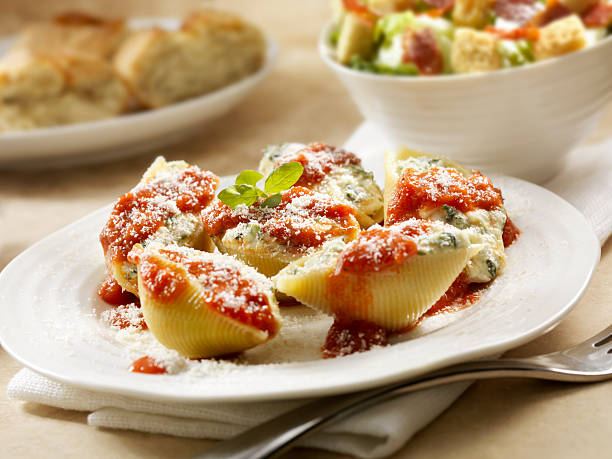
Conchiglie -
Smaller pasta shapes are ideal for meals that are best eaten by the spoonful. Ditalini is perhaps the most well-known for its usage in the classic Italian soup Pasta e Fagioli. Ditalini, also known as tubettini, is a shorter form of macaroni that may be manufactured in the same way with a pasta extruder. The outside can be smooth or ridged, and because of its tiny size, it officially belongs to the "pastina" family of pasta forms.
According to GourmetSleuth, ditalini, which translates to "tiny thimbles," is too short to contain anything for very long. This form works well in soup since it is tiny enough to fit on a spoon and in any liquid. Ditalini is also occasionally used in minestrone. Try matching this shape with similarly shaped dishes like peas or finely diced pancetta if you want to use it for something other than soups and stews.
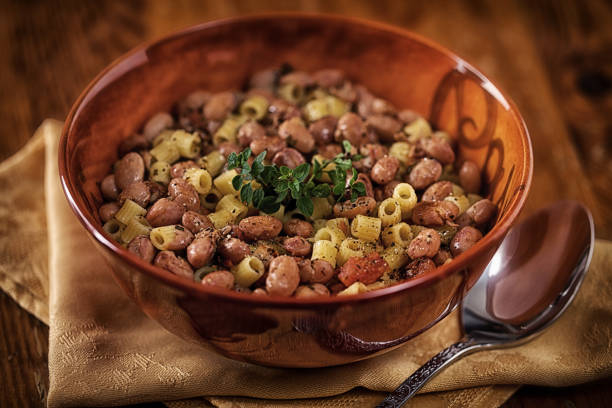
Ditalini 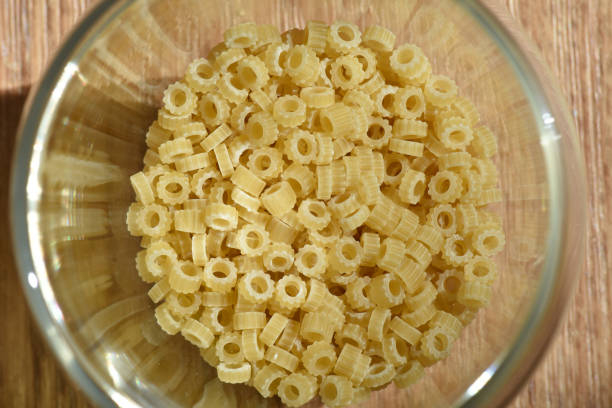
Ditalini -
The word "egg noodles" might be confusing because it does not always relate to pasta. Many forms of pasta are created with eggs, and hence egg noodles, and there are many types of egg-based noodles that are not called Italian pasta. In America, egg noodles are commonly found among spaghetti or other ethnic foods to be used in non-Italian meals such as matzo ball soup, beef stroganoff, or casserole. Chow mein noodles are technically egg noodles since they are created with wheat flour and egg.
This type of noodle may be used as pasta in a rush, but if you're preparing Italian, you should still cook the pasta until it's "al dente", or with a slight bite. This form complements every sauce, from tomato to alfredo. The form isn't intended to adhere to any one sauce or give a unique mouthfeel, but it does function well as a foundation for more complicated recipes.
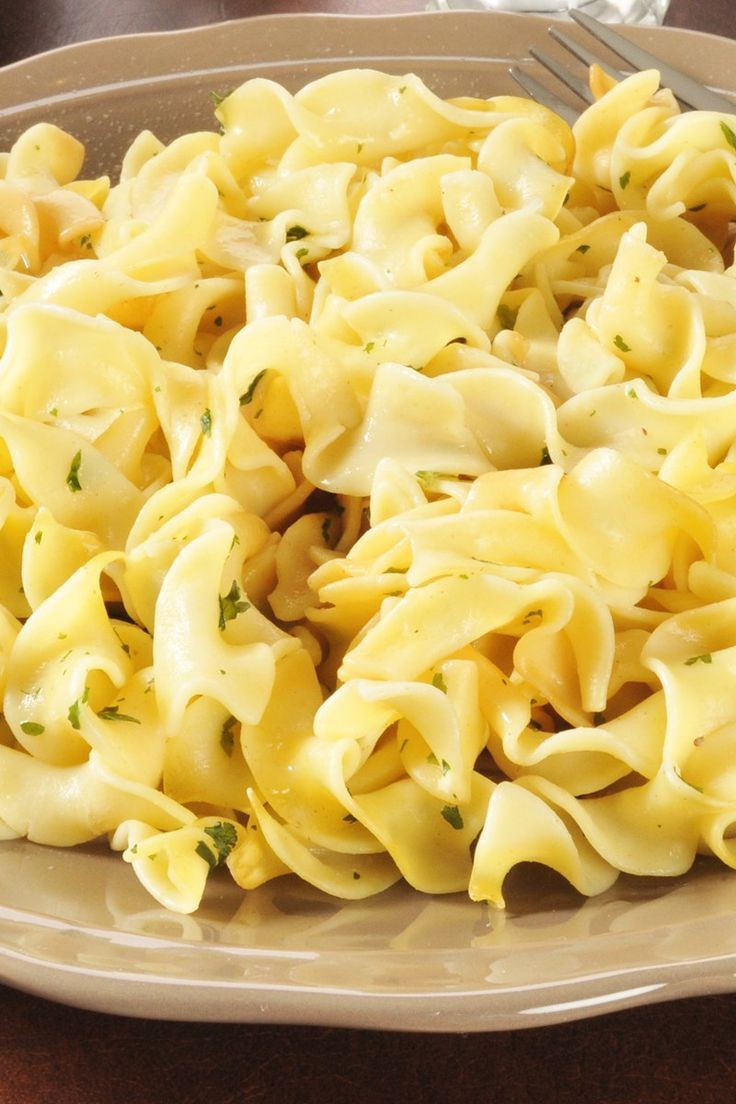
Egg Noodles 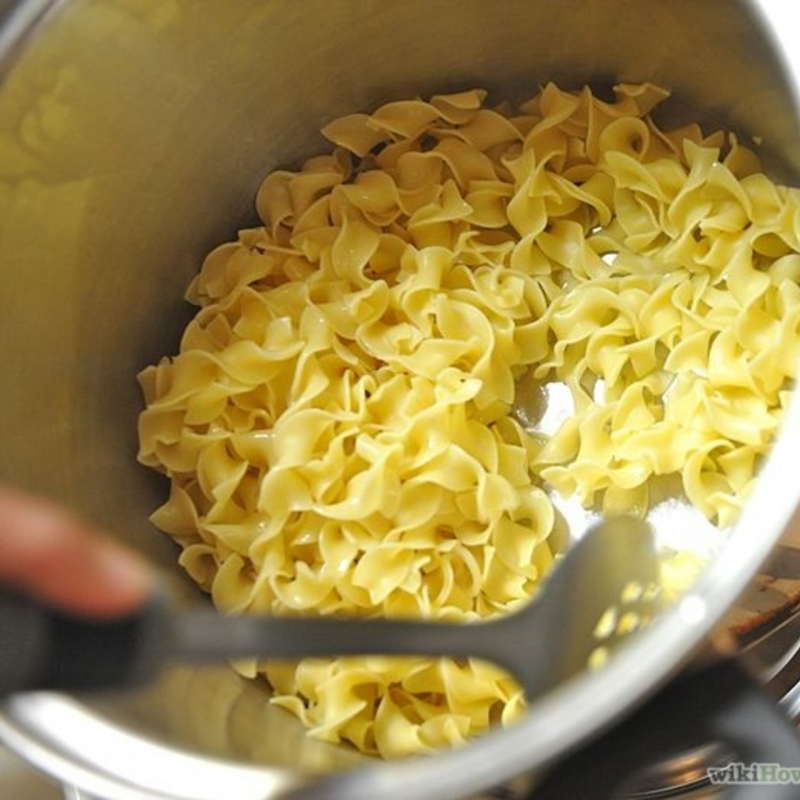
Egg Noodles -
This common pasta shape is known as "elbows" in the United States, while in Italy, it is known as macaroni or maccheroni. Macaroni has one of the most interesting histories of any pasta form. Of course, it is best recognized in America for its starring part in macaroni and cheese (to the point that some might start looking for alternatives). Thomas Jefferson is credited for popularizing macaroni and cheese in the United States, serving it at a state supper after eating the meal overseas and bringing it home.
While the term macaroni usually refers to this specific shape (a short, bent, hollow tube), it can also apply to any dry pasta in general. Some argue that macaroni predates Italy and may allude to the noodles brought back from China by Marco Polo in the eleventh century. Whatever its origin, macaroni pairs well with rich, cheese-based sauces that fill the tube and adhere to the ridged outside.
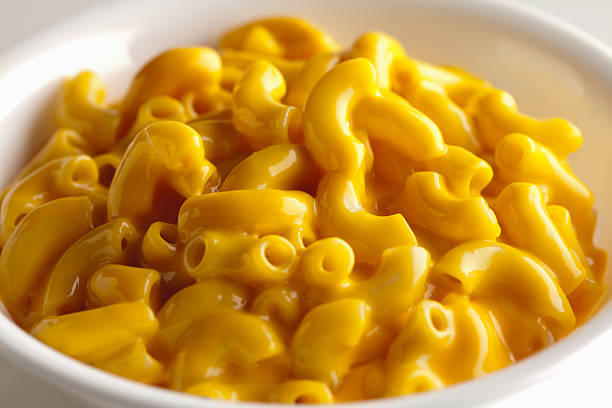
Elbows 
Elbows -
Farfalle pasta draws its name from the Italian word Farfalla, which means "butterflies". Because of its distinctive form, which mimics butterflies and bow ties, the pasta is also known as bow-tie pasta. Farfalle developed in the northern Italian areas of Lombardy and Emilia-Romagna, which are known for producing pasta with fillings within. As a result, farfalle is said to be an unintentional by-product of loaded pasta.
According to The Pasta Project, sixth-century housewives used to prepare packed pasta and then transform the excess dough into butterfly-shaped farfalle, also known as strichetti in the region. Because of its appealing form, leftover dough pasta grew so popular that it was recognized as a distinct sort of pasta in its own right. Farfalle, made from durum wheat, holds its form exceptionally well and is thus a wonderful pasta alternative for baked casseroles as well as luscious tomato and cream-based recipes. Farfalle may also be used to spice up otherwise dull salads!
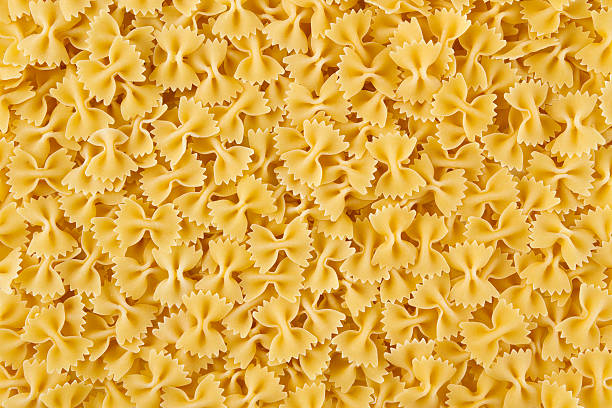
Farfalle 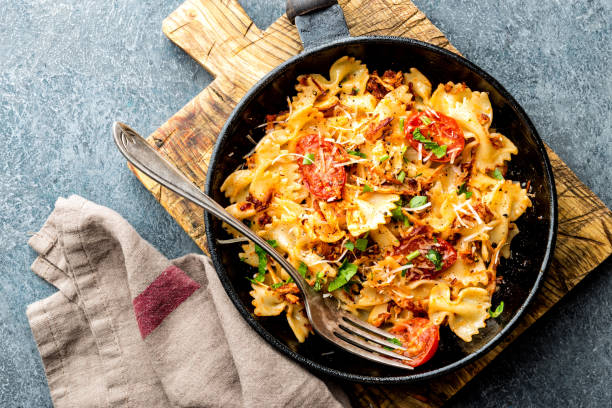
Farfalle -
Pasta may be divided into two major categories: long and short. While the shorter forms of pasta — penne, fusilli, farfalle, and so on — are easy to differentiate from one another, the lengthy varieties of pasta are sometimes confounding. Fettuccine is a long pasta that is sliced into thick ribbons that are midway between linguine and tagliatelle in width.
Fettuccine, which translates to "small ribbons" in Italian, looks just like that. Fresh fettuccine pasta is often produced with eggs and flour and hence has a distinct eggy flavor. Some fettuccine producers cut their ribbons long enough to fill an entire forkful with a single strand. As long as the sauce isn't too thick, fettuccine may keep its form in a variety of cream and tomato sauces. Fettuccine famously served with Alfredo, is a no-brainer if you're seeking pasta with a creamy white sauce. Italians do eat fettuccine with a hefty dollop of butter and a stack of fresh Parmigiano-Reggiano — a simple pasta meal commonly presented to anybody with an upset stomach.
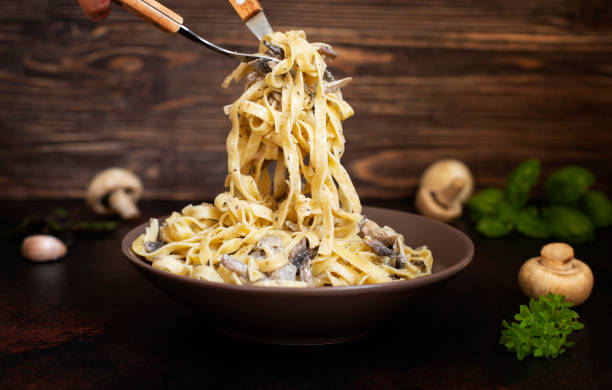
Fettuccine 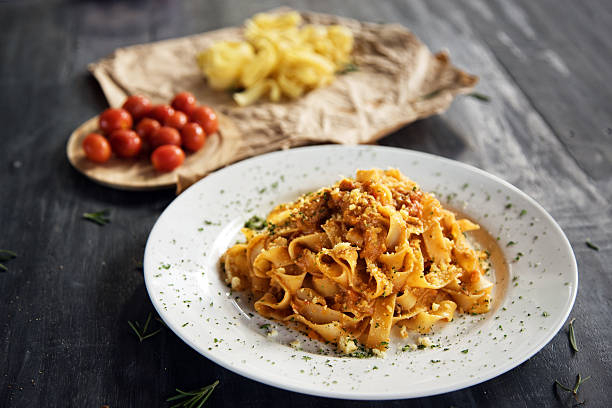
Fettuccine -
The south of Italy is famed for giving its pasta unusual shapes, such as orecchiette, which is formed like a human ear. Fileja originates in Italy's southern Calabria area and has a swirly form that resembles an extended screw. Fileja, which is around three to four millimeters thick, is nearly generally produced fresh at home rather than purchased dry from a store.
A dough of wheat flour, salt, and water is shaped into strings of little ropes no more than three inches in length to form fileja. The dough rope is then pushed onto a short metal rod known as danaco or dinacolo, which is rolled several times until the fileja takes shape. After removing the stick from the dough, the fileja is tossed in a sauce. Fileja is traditionally served on Sundays and holidays in Calabria, soaked in a tomato or minced pig sauce. When freshly rolled, fileja pairs nicely with meaty, heavy, and spicy sauces, particularly those prepared with spicy 'Nduja sausage from Calabria.
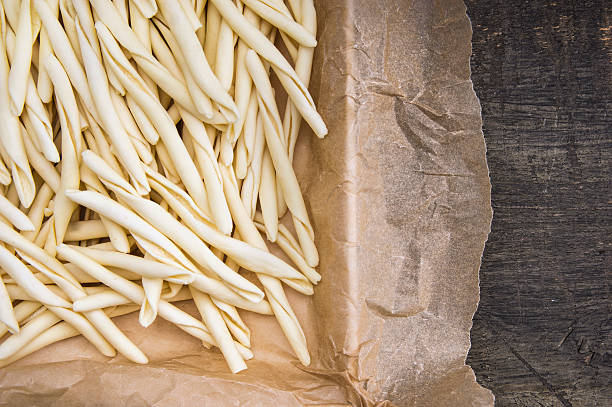
Fileja 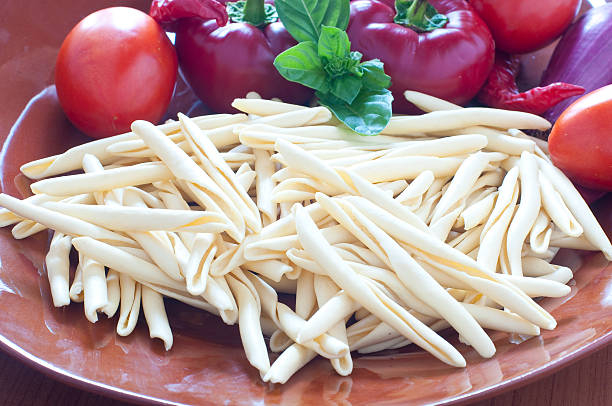
Fileja -
Fusilli acquires its form from a specific process of spinning pasta strips on a spindle rod until they spiral. Fusilli can be a tough pasta to make at home due to the somewhat complicated way of creating it. The secret to fusilli, however, is in the technique by which the spiral forms hollow holes on the surface of the pasta. This makes it an excellent choice when you want the pasta to really hold in the sauce in each bite — anything from thick, meaty sauces to light vinaigrettes in a pasta salad.
Delighted Cooking further mentions that because most store-bought fusilli is produced from firm durum wheat, it retains its form nicely even when reheated after refrigeration. If you're creating pasta meal preps ahead of time and don't want your pasta to turn mushy when warmed, try substituting fusilli for other noodles. While classic fusilli is just a twisted strip of dough, there is also a type of fusilli known as fusilli bucati, which is a spiral pasta with a hollowed core. Fusilli lunghi, on the other hand, is similar to regular fusilli but in a longer, ribbon-like shape.
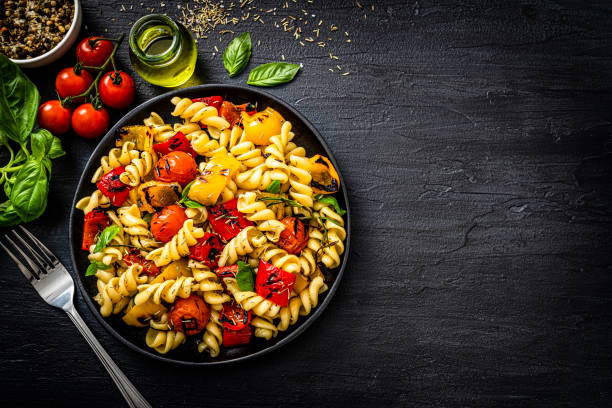
Fusilli 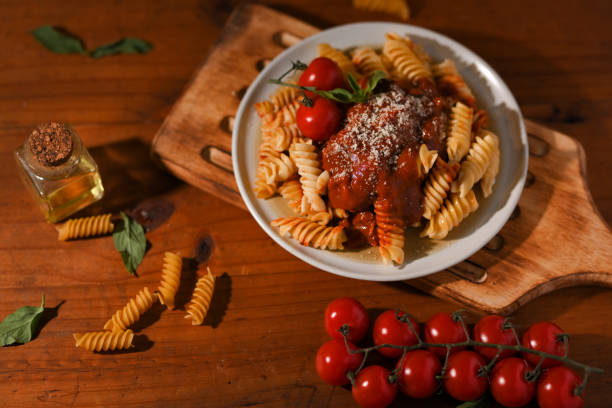
Fusilli -
Even though garganelli looks similar to penne, it is an old pasta form that is used in all mechanical pasta manufacture. While penne is formed by forcing it through a metal die, garganelli is made by rolling square sheets of pasta around a dowel or wooden pole and pressing it closed. According to legend, a cardinal hired a cook for a dinner party in the seventeenth century who ran out of filling for his cappelletti. Garganelli was born when he curled his spaghetti sheets around a wooden spoon.
In contrast to the semolina and water dough used for forms like macaroni and fusilli, this pasta shape is prepared using a softer egg dough. Garganelli is traditionally served with meat sauces, such as ragu or any type of pancetta or sausage. Furthermore, little things such as peas will find their way into the tube for a more enjoyable dining experience.
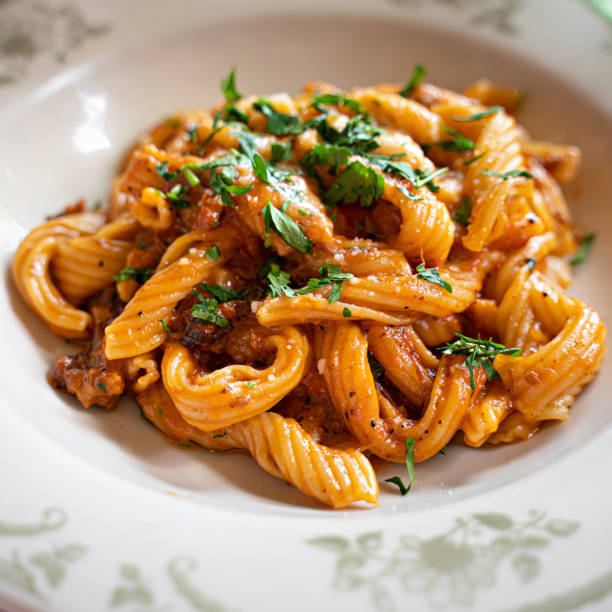
Garganelli 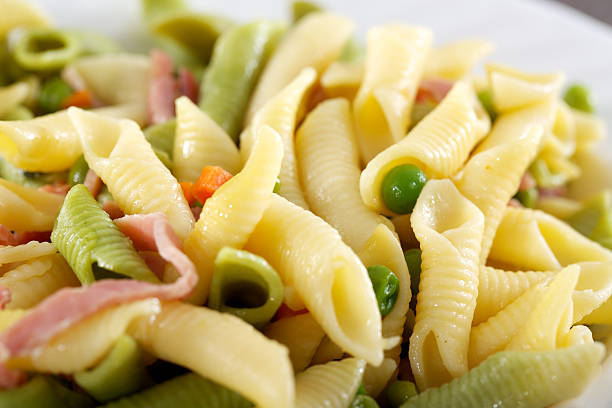
Garganelli -
Gemelli is called after the Italian term for twins because it resembles two independent threads of spaghetti that are entwined into one piece of pasta. Gemelli, on the other hand, is fashioned from a single piece of pasta that has been twisted. Gemelli pasta grew 457% in popularity last year, according to Instacart's grocery trends report for 2021. The adaptability of the pasta may have contributed to its appeal.
Gemelli, like penne, may be used in a variety of sauces and culinary methods. Because of the microscopic holes on the surface caused by the twisted structure of the pasta, gemelli may effectively trap many types of sauces. It might be used in tomato-based sauces, cream-based sauces, or even meat-based sauces. Gemelli pairs nicely with pesto and oil-based dressings, and it may also be used in casseroles, cold salads, and soups.
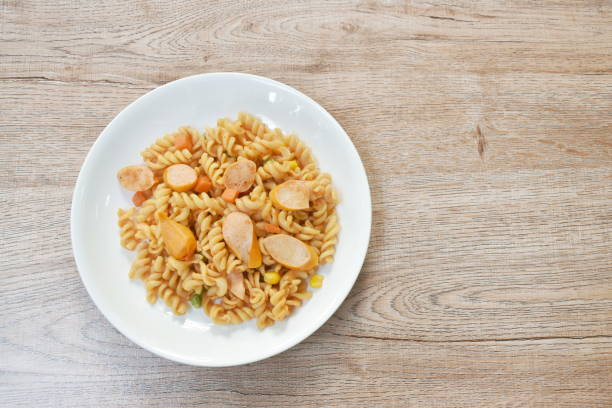
Gemelli 
Gemelli -
Gigli pasta is also known as campanelle, which translates to bellflowers or small bells, the items after which the pasta is formed. Although some debate the origins of gigli, it is usually assumed that the pasta originated in Tuscany and was inspired by the lily flower, which is the national emblem of Florence. This is why gigli is also known as gigli Toscani in the region.
Fresh gigli is normally made with a semolina, egg, and salt dough that is formed into a bell with ruffled edges. Because of its distinctive form, gigli has a deep hollow on one side, similar to a bell, that may contain sauce. Due to the region's love for game meat, gigli is typically served in a venison ragù. The spaghetti also pairs well with cream and vegetable-based sauces. Another famous dish is pasta tordellata, which mixes ricotta and Swiss chard put within the tiny hollow of gigli and then coated in a beef ragù.
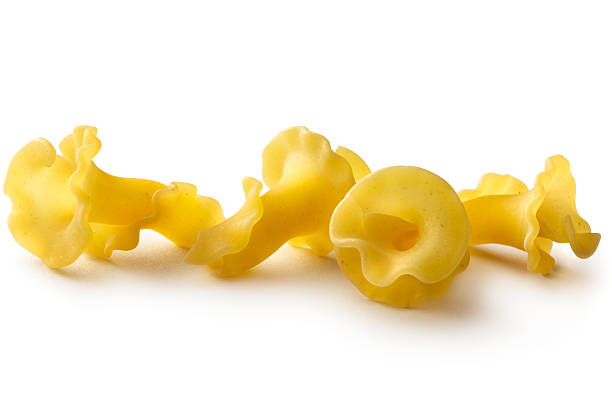
Gigli 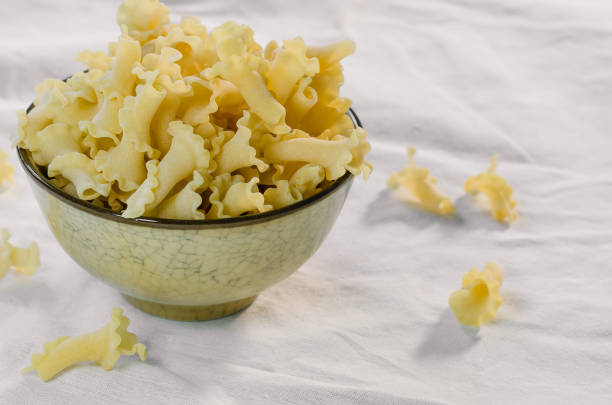
Gigli




















